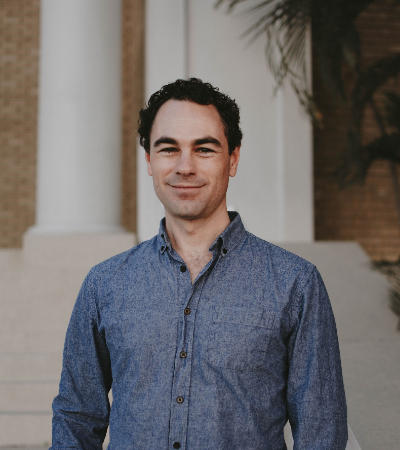Turkey Fails to Reach Ceasefire for Idlib, U.S. Threatens Punitive Strikes While Reinforcing Eastern Syria, Basra Protests Shake Up Iraqi Government Again
Bombing in Idlib Resumes after Diplomatic Talks
Published by The Lawfare Institute
in Cooperation With

Bombing in Idlib Resumes after Diplomatic Talks
The Assad regime resumed its air campaign targeting Idlib province on Sunday after a brief hiatus during diplomatic talks in Tehran. The air campaign, which began on September 4, is the initial stage of an expected offensive by regime forces to retake one of the rebels’ last enclaves, which has been protected since May 2017 as part of a de-escalation agreement. That arrangement placed the area under Turkish supervision, but the Assad regime and its foreign backers have complained that Turkey has not followed through on its commitment to constrain or remove extremist groups in the area. Now that the Assad regime has recaptured much of the southwest, which was part of a de-escalation zone backed by Jordan, it is looking to extend its control back into Idlib as well.
The prospect of a new offensive has worried Turkish officials, who fear that it will push more Syrian refugees over the border and pull Turkish troops and Turkish-supported militias into the fighting. More than a third of the civilian population of Idlib have already been internally displaced by the country’s civil war, and Turkey maintains a network of a dozen military installations across the province to monitor the de-escalation arrangement.
After weeks of Turkish officials warning of the potential humanitarian toll of a new offensive—and signals from Iranian and Russian diplomats that they were prepared to launch an attack anyway—Turkish President Recep Tayyip Erdogan, Iranian President Hassan Rouhani, and Russian President Vladimir Putin met in Tehran last Friday to try to reach a compromise. But the talks came up short; Putin dismissed Turkey’s request for a ceasefire, saying that while he thought it would be positive, he did not think it would hold. Cengiz Candar, writing for Al-Monitor, notes that the joint statement issued at the end of the summit gestured at a negotiated settlement to the conflict as a concession to Turkey, but did not address Erdogan’s concerns about the Idlib offensive.
Turkey is now bracing for conflict and sending convoys of reinforcements to its observation posts in Syria. Al-Jazeera reports that several military convoys have crossed into Syrian territory since the start of the month, and Bloomberg notes that the Turkish military is positioning additional tanks, artillery, and armored personnel carriers at the border. However, at this point, it is unclear how far either Turkey or the Assad regime is prepared to escalate the conflict. Russia and Iran’s dismissiveness of Turkey’s concerns and the regime’s bombardment of rebel-held territory suggests they may try to press ahead with the offensive; “I don’t think there’s anything that can stop it,” Gen. Joseph Dunford, chairman of the Joint Chiefs of Staff, told Reuters last Friday. But Hassan Hassan, of the Tahrir Institute for Middle East Policy, has suggested that it may be a face-saving feint that intentionally stops short of provoking an international response.
Even if it is just a feint, it has all the hallmarks of the regime’s cruelty. The White Helmets have reported that regime helicopters are once again dropping notoriously imprecise barrel bombs, which were responsible for the deaths of more than 50 civilians, including two children, on Sunday. Other airstrikes have targeted medical and first-responder infrastructure. More than 30,000 people have been displaced by the fighting so far, according to the United Nations, and experts warn that figure could grow to more than 800,000 in the coming days.
United States Threatens Punitive Strikes Against Assad, Reinforces Position in Eastern Syria
The United States has responded to the escalation in Idlib with mixed messages, while committing to an indefinite presence in Syria’s east. Trump administration officials have blustered about the new regime offensive, but consistently stated that a U.S. response will only be triggered by another chemical attack. On September 3, Trump tweeted that the regime “must not recklessly attack Idlib Province,” and prior to that, Secretary of State Mike Pompeo also posted, “The U.S sees this as an escalation of an already dangerous conflict … The 3 million Syrians, who have already been forced out of their homes and are now in #Idlib, will suffer from this aggression. Not good. The world is watching.” U.S. Ambassador to the United Nations Nikki Haley has been more specific: On September 4, she seemed to suggest that the United States would only oppose the Assad regime if it carried out another chemical attack, like the sarin bombings that have twice prompted punitive U.S. strikes on regime targets. “This is a tragic situation, and if they want to continue to go the route of taking over Syria, they can do that. But they cannot do it with chemical weapons,” Haley said. She reiterated the chemical weapons condition two days later, warning the Assad regime, Iran, and Russia, “you don’t want to bet against the United States responding again.” On Monday, U.S. National Security Advisor John Bolton promised that any punitive strike in response to chemical weapons use would be “much stronger” than previous U.S. actions.
“By my putting out that message I think maybe it’s going to send a signal,” President Trump told the Daily Caller in an interview last week.
The administration’s warnings come amid reports that the regime has authorized the use of chlorine gas in Idlib, according to U.S. officials who spoke to the Wall Street Journal. It is unclear whether the United States would respond to the use of chlorine, which has not prompted U.S. punitive strikes when deployed by the regime previously. "I will not comment on U.S. military plans, but Assad's use of chemical weapons, sarin and chlorine, and disregard for civilian lives is well documented and contrary to regional stability," Pentagon spokesperson Dana White told the Journal. Gen. Dunford told Reuters last Friday that the U.S. military was preparing military options for a strike on Assad regime targets but declined to discuss any intelligence about the regime’s chemical weapons arsenal.
While the Trump administration hedges about Idlib, it is committing to an open-ended deployment in Syria’s east, where 2,200 U.S. troops are bolstering local forces in areas captured from the Islamic State. Those forces will remain in place to prevent a terrorist resurgence and provide a bulwark against Iran’s presence in Syria, James Jeffrey, the administration’s representative for Syria engagement, told reporters last week, adding, “That means we’re not in a hurry.”
The long-term positioning of U.S. troops in Syria is a dramatic shift from the Trump administration’s plans earlier this year to withdraw its military presence in time for the midterm elections in November. Last April, Trump promised a speedy withdrawal after the defeat of the Islamic State and was reportedly considering plans that would see U.S. troops replaced by a multinational force provided by several Arab states. But the administration was inconsistent about its plan—at the same time, Amb. Haley was telling reporters that the United States would stay to prevent chemical weapons strikes and constrain Iran’s actions. That now seems to be the administration’s chosen course of action, which the Journal’s Michael Gordon reports will be coupled with new efforts to engage in diplomacy to resolve the Syrian civil war.
In a demonstration of the U.S. commitment to remain in eastern Syria, the United States deployed reinforcements to a military base at al-Tanf, near the border with eastern Jordan. Iranian-backed militias have previously pressed U.S. forces in the area, and last week Russia warned the United States that it would target nearby groups. That prompted the United States to send 100 additional troops to the site and delineate a “security zone” with a 35-mile radius, in which U.S. officials said they would not allow rival forces to operate. “The United States does not seek to fight the Russians, the government of Syria or any groups that may be providing support to Syria in the Syrian civil war,” a CENTCOM spokesperson said. “However, the United States will not hesitate to use necessary and proportionate force to defend U.S., coalition, or partner forces.”
The continued U.S. presence might assure Israel, which has previously pressed the United States to remain in Syria to check Iran and prevent it from consolidating control of a land corridor to its Hezbollah allies in Lebanon. But it will further alienate Turkey, which has chafed at U.S. support for Kurdish militias in eastern Syria. In Tehran last Friday, Erdogan joined Rouhani in condemning the U.S. presence in Syria. “As the world keeps its eyes on Idlib … under a pretext of fighting Daesh [the Islamic State], some foreign forces have directed their troops into a different direction. We are incredibly concerned with the U.S. continuing to support a terrorist organization. Although Daesh is no longer posing a threat, America sent several thousand planes with arms. This is illustrative of how they 'support' the region,” he said, according to Al-Monitor.
Basra Protests Upend New Coalition Government
Protests in the southern city of Basra, Iraq, escalated last week, and the government’s response may have effectively ended Prime Minister Haider al-Abadi’s bid to retain his office in negotiations to form a new government. The protests—against government corruption, polluted water supplies, and poor electricity infrastructure—have been building for more than two months, but grew more violent on September 6 after thousands of residents were hospitalized for drinking polluted water. In two days, rioters burned down political offices, the Iranian consulate, and the headquarters of most Iranian-supported militias in the city; some also briefly shut down the city’s large commercial port and a water treatment facility. The government responded with a curfew and the deployment of troops; at least 15 people were killed and 249 others injured in clashes with security forces. On Saturday, unknown militants fired three rockets at the Basra airport, where the U.S. consulate is located, but no damage was reported.
The protests come amid the Iraqi government’s attempt to form a new governing coalition. That looked close at hand last week, when Abadi and Muqtada al-Sadr, the cleric backing the top-finishing slate of candidates in the country’s May election, announced that they had reached an arrangement to form a government, but formalizing the arrangement was postponed after a rival bloc, led by Haider al-Amiri, walked out of a parliamentary session on September 3. Now Abadi is bleeding support over the government’s handling of the Basra protests. On Saturday, after an emergency session of parliament, members of Sadr’s Sairoon bloc and Amiri’s Conquest Coalition called for Abadi’s resignation—if formalized, their alliance could redraw the lines of the new coalition government. Grand Ayatollah Ali Sistani, the top Shia authority in Iraq, is also tipping the scales against Abadi; on Monday, he said in a statement that the protests in Basra demonstrated the need for new leadership and that he would not support any current government officials to be the next prime minister. “Now his reelection is dead, and the U.S. doesn’t have any good options, having put so much effort into getting him reelected,” Iraq analyst Kirk Sowell told the Washington Post. With Abadi out of the running, the most prominent parties are now jockeying to rally enough support to form a government—which could be another prolonged process.





